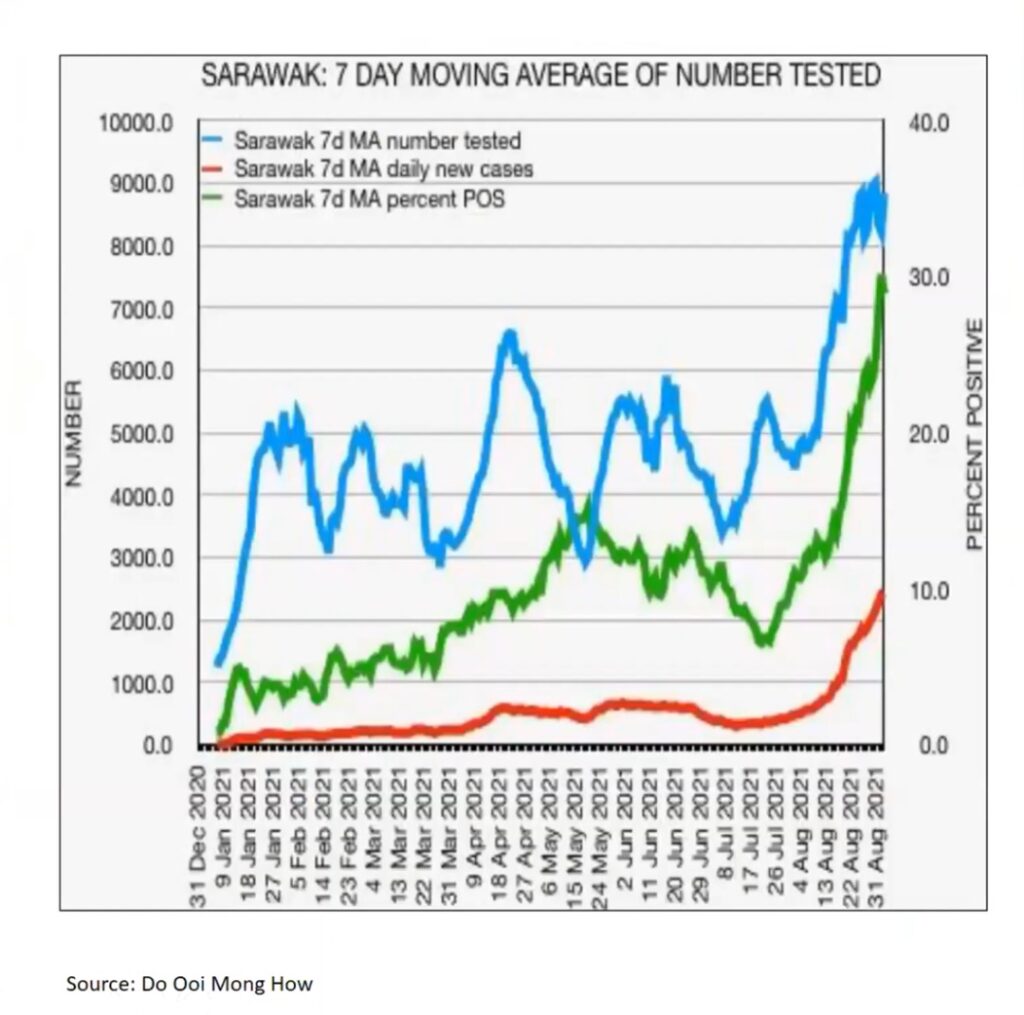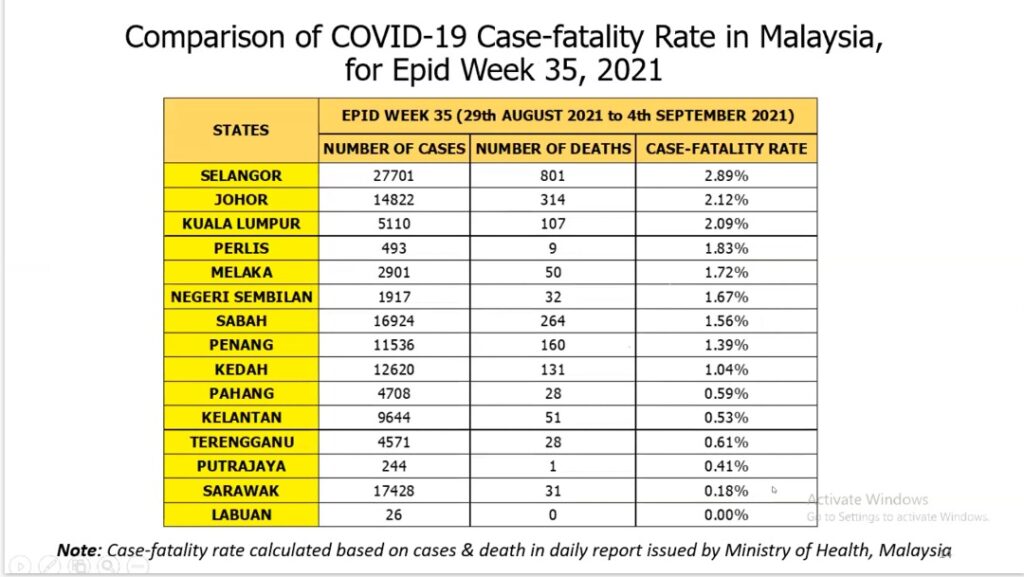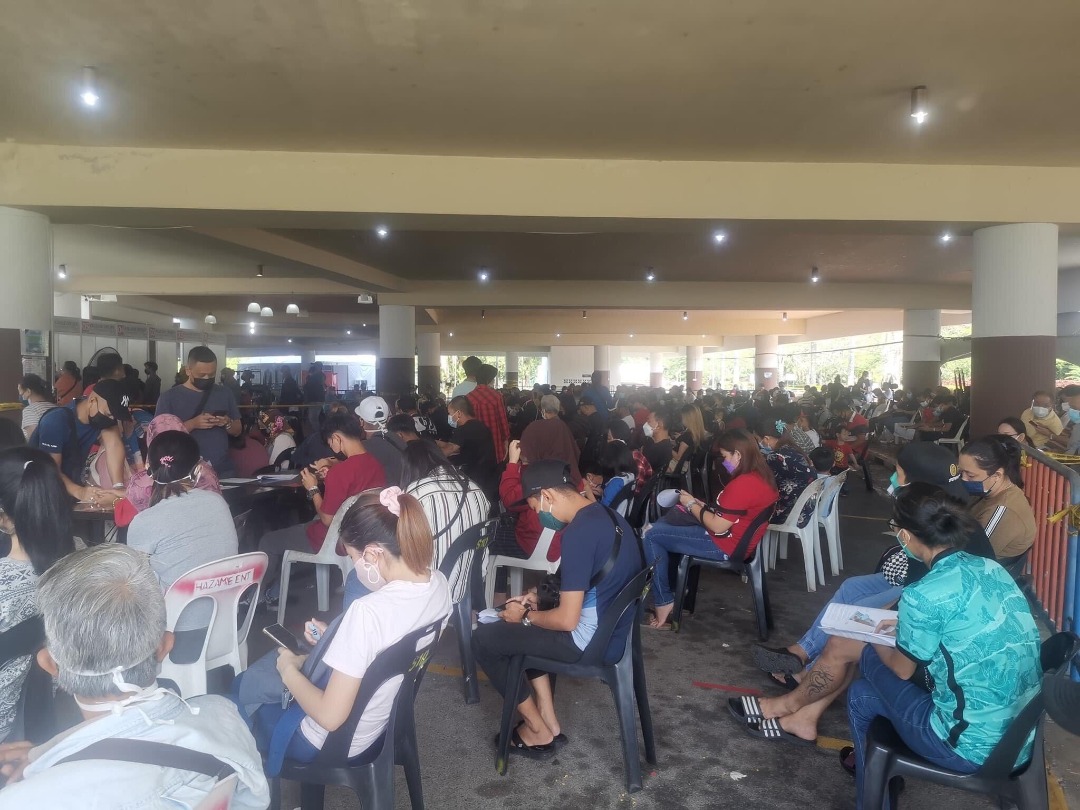KUALA LUMPUR, Sept 13 — Sarawak has halted testing Covid-19 cases’ close contacts who do not show symptoms, but will nonetheless isolate them in their homes, amid the state’s surging epidemic that skyrocketed to over 5,000 new infections yesterday.
State health director Dr Mohamed Sapian Mohamed said the Health Ministry has given approval to the state to use virtual Covid-19 Assessment Centres (CAC) like in the Klang Valley, where either confirmed Covid-19 cases or their close contacts can turn up in person to a CAC on the first day and receive a digital home surveillance order (HSO) to self-isolate at home for the next nine days.
He pointed out last Thursday that although more than 3,000 daily Covid-19 cases are being recorded in Sarawak that tests about 15,000 to 20,000 samples a day — yielding a very high positive rate of between 15 and 20 per cent — 99 per cent of daily infections are either asymptomatic (Category One) or mild (Category Two). Most Category One cases, Dr Sapian said, do not progress into Category Two.
“So now, our strategies, starting from this Saturday (September 11), we will only test those who are contacts — symptomatic. Asymptomatic — we will put them at home for home surveillance,” Dr Sapian told a webinar titled “Living with Covid-19 Endemic” last Thursday organised by the Society of Private Medical Practitioners Sarawak (SPMPS) that provided CodeBlue a video of the speakers’ presentations in the virtual meeting.
“We have that virtual monitoring, so we will embark on that. People were asking why you put us at home but don’t test. The reason is that even if we test you, you are positive, but you are Category One, and we put you at home so you won’t infect others. You are also safe at home.
“So why test? Because now, the more you test, the more you get. Now, what we want to do, besides HSO, as I told you just now, first thing is health education so that people observe SOPs (standard operating procedures), so they don’t spread the disease to others.”
The state health director noted that long queues were recently seen at Covid-19 sampling centres in Kuching, with some lining up as early as the night before at Dewan Masyarakat MBKS to be the first to get tested the following morning. As such, the state health department has now opened up more testing facilities. “The less people go to the centre, the chances of forming clusters at the centre is less.”
Dr Sapian said home quarantining asymptomatic cases would preserve health care capacity so that hospital beds are reserved for high-risk groups. “We can focus on those having severe illness only.” During Klang Valley’s Covid-19 crisis the past two months, the industrialised region only tested cases with symptoms to prioritise scarce hospital beds for them.
Sarawak yesterday reported a record high 5,291 new Covid-19 cases, the highest nationwide and comprising about 28 per cent of the nation’s 19,198 infections. Severe Covid-19 cases are also rapidly filling up hospitals in the state. As of September 11, Sarawak’s Covid-19 intensive care unit (ICU) has hit 73 per cent capacity, while non-ICU hospital beds are at 83 per cent capacity.
Dr Sapian said in a statement that the state’s positive rate yesterday was 18.8 per cent based on 5,291 positive results from 28,065 samples, an increase from a 14.5 per cent average positive rate. “This shows transmission is occurring widely in the community.”
He also said the high number of samples tested had caused a delay in test results — up to five days for many cases — due to increased burden on lab capacity, but all contacts at risk were issued HSO.
Kiyu: Increased Covid-19 Cases Not Because Of Testing

However, Prof Dr Andrew Kiyu, a professor of public health at University Malaysia Sarawak’s (Unimas) faculty of medicine and health sciences, disagreed with Dr Sapian’s decision not to test asymptomatic close contacts of Covid-19 cases, stressing that it was important to know the true extent of the epidemic as the bigger the overall number of cases is, the higher the number of severe infections.
“I think for close contacts of cases, we should use RTK (rapid test kit) antigen, but it’s up for discussion,” Dr Kiyu said at the SPMPS webinar.
The consultant epidemiologist cited Sarawak’s Covid-19 cases reported on September 6, for example, where 3,251 were Category One upon diagnosis, 459 in Category Two, as well as two each in Categories Three and Five. Without testing asymptomatic cases, Sarawak would only be reporting 463 instead of 3,714 cases.
“I think we should still test close contacts, asymptomatic, using RTK antigen,” said Dr Kiyu. “We still need to know this number. Otherwise, how are we going to get our rates and denominators and so on?”
He also stressed that Covid-19 cases are surging in Sarawak not because of increased testing, but because of higher transmission, highlighting the rising positive rate that hit as high as 30 per cent on August 31.
“Unless the positivity rate plateaus, then we can say the more we test, the more we find. But at the moment, our high cases are due to high community transmission; it’s not because we’re testing a lot,” said Dr Kiyu, who is also former Sarawak state health director.
State health director Dr Sapian told the SPMPS webinar that the surge in Covid-19 infections was due to the Delta variant spreading from the southern region to all other zones in Sarawak.
He noted that only about 64.9 per cent of Sarawak’s total population has been completely vaccinated with two doses of the coronavirus vaccine, even as 20 per cent to 30 per cent of daily cases are found in those aged below 18. Sarawak has already begun administering Covid-19 vaccines — the Pfizer-BioNTech jab, which is the only approved vaccine for adolescents aged 12 to 17 — to 16- and 17-year-olds, covering about 5,000 adolescents on Wednesday.
“16- and 17-year-olds, we have about 96,000 children, so we expect to finish it in a week.”
Sarawak Among Lowest Case Fatality Rates In Malaysia

Dr Sapian said with an average of 3,000 new daily Covid-19 cases, assuming that each case has 10 contacts, this would lead to 30,000 contacts a day, or 420,000 contacts in 14 days requiring monitoring.
“It’s a very challenging job.”
A rate of 3,000 daily cases would lead to 30,000 cases in 10 days, said Dr Sapian, exceeding the capacity of only 10,000 patients in hospitals and Covid-19 quarantine and treatment centres (PKRCs).
“So we have to strengthen monitoring of cases at home because we can have BIDs (brought-in-dead), we can have patients deteriorating from probably Category One to Category Three, Four or Five.”
He noted that Sarawak reported the country’s second-lowest Covid-19 case fatality rate in the 35th epidemiological week (August 29 to September 4) at 0.18 per cent, 16 times lower than Selangor’s 2.89 per cent.
Sarawak Does Far More Genomic Sequencing Than Other States

Dr Sapian also pointed out that Sarawak was reporting the highest number of Covid-19 cases with the highly transmissible Delta variant because the state — through Unimas — conducts genomic sequencing on far more samples than other states. The Institute for Medical Research (IMR), he said, does SARS-CoV-2 genomic sequencing for other states in the peninsula.
“If we can sample in a month about 100 or 300, but other states only five each state — that’s why they capture little, as compared to us. Does it mean that we have more Delta variant than them? So we are lucky [that] Unimas is continuously doing this detection of circulating variants in the community.”
A graphic by Prof Dr David Perera from Unimas’ Institute of Health and Community Medicine and Dr Ooi Mong How from Sarawak General Hospital, which was shared in the SPMPS webinar, showed that the predominance of Delta in the state soared from about 10 per cent in the 25th epidemiological week (June 20-26) to nearly 100 per cent in the 33rd week (August 15-21).
“It was in the southern zone, now moving to the middle and northern zone. We are really in danger,” Dr Kiyu told the webinar, referring to Delta.
Health director-general Dr Noor Hisham Abdullah said last Friday that as of September 10, a total of 1,801 Delta cases have been detected nationwide, including the highest in Sarawak at 696 cases, followed by Selangor with 93 cases. He did not release data on the number of samples tested in each state.
An earlier version of the story erroneously reported that the webinar was organised by the Sarawak Malaysian Medical Association; it was organised by the Society of Private Medical Practitioners Sarawak.








